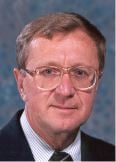A Commemorative Issue in Honor of Victor Starov: Influence of Surface Forces on Membrane Separations
A special issue of Membranes (ISSN 2077-0375). This special issue belongs to the section "Membrane Surfaces and Interfaces".
Deadline for manuscript submissions: closed (28 February 2022) | Viewed by 40127
Special Issue Editors
Interests: mathematical modelling of reverse osmosis, nano-, ultra-, microfiltration and electrodialysis; interaction between colloidal particles and charged membrane surface; asymmetry of transport characteristics of step-charged bi-layer and linearly-charged one-layer membranes; hybrid and nanocomposite membranes; modelling of complex porous media (like ion-exchange membranes) using the cell method; magnetic and electric field action on Newtonian and non-Newtonian (micropolar) fluid flows through a porous membrane
Interests: water chemistry; membrane electrolyzer; water splitting; wastewater treatment and reuse; separation and purification technologies; electrodialysis; desalination; control of membrane fouling; membrane pre-treatment processes; membrane processes; recovery of waste liquors; ion exchange membrane; ion exchange resins; coating technologies; self-cleaning nano-films; cost analysis of reuse; circular economy; solar treatment
Special Issue Information
Dear Colleagues,
Our journal is pleased to publish a Special Issue in honour of Professor Victor Mikhailovich Starov, Doctor of Science in Chemistry, Fellow of the Royal Society of Chemistry. Victor is a Professor at the Department of Chemical Engineering, Loughborough University, UK. June 14, 2021 will be the 75th birthday of Professor Starov.

Victor graduated from Moscow State University in 1969. He was awarded his PhD entitled “Capillary Hysteresis and the Structure of Isotropic Porous Media” in 1973 by USSR Academy of Sciences and Doctor of Sciences “Equilibrium and Kinetics of Thin Liquid Layers” in 1981 by Petersburg University. Starting in 1974, over many years, Victor has collaborated in his research with Fellow of Russia Academy of Sciences B.V. Derjaguin and Profs. N.V. Churaev, V.D. Sobolev, and other colleagues from the Institute of Physical Chemistry, USSR Academy of Sciences (now Frumkin Institute of Physical Chemistry and Electrochemistry, Russian Academy of Sciences).
In 1983, Victor became the head of the Department of Pure and Applied Mathematics, Moscow State University of Food Production, where, in addition to teaching, he was involved in research together with A.N. Filippov, V.V. Kalinin, V.I. Ivanov, S.I. Vasin, and Yu.E. Solomentsev. After the collapse of the Soviet Union, Victor worked for about three years as a Visiting Professor at the Department of Chemical Engineering, University of Texas at Austin (US), then in Toulouse University (France), Instituto Pluridisciplinar (Madrid, Spain), and in Swansea University of Wales (UK). In 1998, he moved permanently to the Department of Chemical Engineering, Loughborough University (UK) as a Professor in Chemical Engineering.
For many years, Victor was involved in various aspects of membrane separation, including reverse osmosis, ultra- and microfiltration, and electrodialysis. He organised Special Issues of Advances in Colloid and Interface Science and Journal of Membrane Science, which published a collection of papers of membrane scientists from Russia and later co-organised the publication of a Special Issue of Desalination journal with Professor Gangasalam Arthanareeswaran, which published a collection of papers presented by membrane scientists from India. In the case of reverse osmosis, Victor determined the maximum value of the rejection coefficient and corresponding optimum velocity of filtration, which were calculated through all physico-chemical parameters of the process. The negative rejection of some ions from the mixture is explained, as well as a change in the pH of the permeate. The streaming potential is calculated as a function of Peclet number, distribution coefficients, membrane charge; a theory of reverse osmosis of multicomponent electrolyte solutions was developed and verified against available experimental data, which demonstrated very good agreement between the theory predictions and experimental data. Victor developed a theory of the formation and compressibility of cake layers formed on membrane surfaces during ultra- and microfiltration based on colloidal interactions between particles and membranes, and a new theory of the sieve mechanism of microfiltration was suggested, which was verified by experimental investigations. A new phenomenon of concentration of electrolytes in the permeate during ultrafiltration in the presence of polyelectrolytes in the feed solution was predicted and verified. Victor investigated the electrodialysis of bilayer membranes and predictions were verified against experimental data.
Victor also studied, in detail, the simultaneous action of capillary forces and disjoint pressure in thin liquid layers and a transition zone (in the vicinity of liquid layers near the three-phase contact line) under equilibrium, quasi-equilibrium, and dynamic conditions. This made it possible to identify stability conditions of the transition zone, to predict the existence and stability of equilibrium non-flat liquid layers, to investigate the influence of the roughness of the solid surface on the measured values of the disjoining pressure, and to predict an instability threshold for thin liquid layers on outer cylindrical or spherical surface in the case of complete wetting. He explained the phenomenon of static hysteresis of contact angle on a smooth homogeneous surface that allowed him to calculate both advancing and receding contact angles via the disjoining pressure isotherm and to predict the presence of thick films behind receding meniscus (the latter phenomenon was discovered and studied by N.V. Churaev and his group).
Victor expressed the line tension via the disjoining pressure and calculated its value; he studied the deformation of soft solids caused by the disjoining pressure in the transition zone. He also predicted both the exponent and pre-exponential factor in the spreading law in the case of complete wetting (excellent agreement between theory and experimental data was disclosed later); he investigated the motion of bubbles and oil droplets in thin cylindrical and/or tapered capillaries under the applied pressure or temperature gradient.
Together with his colleagues, Starov predicted the adsorption of surfactant molecules on bare hydrophobic surfaces in front of moving aqueous surfactant solutions. This allowed them to formulate and experimentally confirm the kinetics of spreading of surfactant solutions over hydrophobic surfaces and the imbibition of surfactant solutions into hydrophobic capillaries.
Victor developed a new theory of the spreading of liquids over dry and liquid-saturated porous substrates. Based on this theory, the universal law of spreading was predicted, which turned out to be in excellent agreement with experimental observations. He also developed a theory on foam drainage placed on a thin, porous substrate.
Victor developed a new theory on the effective viscosity of suspensions and emulsions on the consideration of cluster formation and proposed a new method of calculation of the effective properties of porous media.
Prof. Starov always invested a lot of effort into the training of young scientists. More than 30 PhDs and four Doctor of Sciences degrees were successfully awarded to his younger colleagues under his supervision in Russia, United States, Bulgaria, Spain, France and UK. Starov is a well-respected authority among his colleagues all over the world. At present, he is the member of the Editorial Boards of 14 scientific journals, including Desalination journal, Colloid journal, Advances in Colloid and Interface Science, and Current Opinion in Colloid and Interface Science. He is an Editor in Chief of Journal of Chemical Engineering & Process Technology and an Associate Editor of Journal of Colloids and Interfaces. Prof Starov is a Member of the Council of International Association of Colloid and Interface Scientists, an Honorary Professor of Moscow State University of Food Production, and a Fellow of the Royal Society of Chemistry.
Prof. Starov has published around 300 papers:
http://scholar.google.co.uk/citations?hl=en&user=HxpVycEAAAAJ&view_op=list_works
Prof. Dr. Anatoly Filippov
Prof. Dr. Hüseyin Selçuk
Guest Editors
Manuscript Submission Information
Manuscripts should be submitted online at www.mdpi.com by registering and logging in to this website. Once you are registered, click here to go to the submission form. Manuscripts can be submitted until the deadline. All submissions that pass pre-check are peer-reviewed. Accepted papers will be published continuously in the journal (as soon as accepted) and will be listed together on the special issue website. Research articles, review articles as well as short communications are invited. For planned papers, a title and short abstract (about 250 words) can be sent to the Editorial Office for assessment.
Submitted manuscripts should not have been published previously, nor be under consideration for publication elsewhere (except conference proceedings papers). All manuscripts are thoroughly refereed through a single-blind peer-review process. A guide for authors and other relevant information for submission of manuscripts is available on the Instructions for Authors page. Membranes is an international peer-reviewed open access monthly journal published by MDPI.
Please visit the Instructions for Authors page before submitting a manuscript. The Article Processing Charge (APC) for publication in this open access journal is 2200 CHF (Swiss Francs). Submitted papers should be well formatted and use good English. Authors may use MDPI's English editing service prior to publication or during author revisions.
Keywords
- reverse osmosis
- nano-, ultra-, microfiltration
- electrodialysis
- surface interactions of colloidal particles with membranes
- modelling of ion transfer through porous media (membranes)
- cake and gel formation on the membrane surface
- cell models of membranes
Benefits of Publishing in a Special Issue
- Ease of navigation: Grouping papers by topic helps scholars navigate broad scope journals more efficiently.
- Greater discoverability: Special Issues support the reach and impact of scientific research. Articles in Special Issues are more discoverable and cited more frequently.
- Expansion of research network: Special Issues facilitate connections among authors, fostering scientific collaborations.
- External promotion: Articles in Special Issues are often promoted through the journal's social media, increasing their visibility.
- Reprint: MDPI Books provides the opportunity to republish successful Special Issues in book format, both online and in print.
Further information on MDPI's Special Issue policies can be found here.







